*This page is a buying guide and glossary exclusively for katsuobushi. Visit our pages on bushi made from different fish or dashi ingredients in general for more information. The types of katsuobushi elaborated below are also sold shaved in different ways.
So you’ve learned about the different parts of katsuobushi filets that are sold. However, you enter a store in Japan and find many different types of katsuobushi, all at different prices. Some are more expensive than others, whilst some are thicker with a much darker color. Here, we’ll try to cover as much information as possible on the different subsets of katsuobushi you may find.
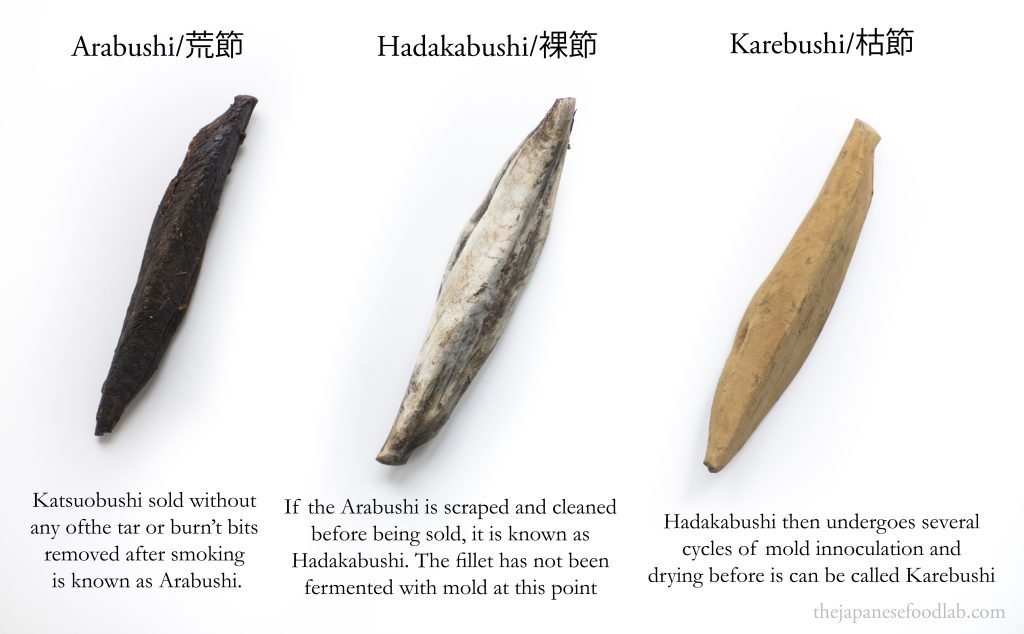
What is Satsuma bushi?
When reading about how katsuobushi is made, you’ll notice that the fish are simmered in hot water before being deboned and skinned in a tank of water (water de-boning, 水骨). This is because the fish are usually caught en masse and first frozen out at sea. As the texture of the fresh changes once defrosted for processing, it makes it harder to debone and skin correctly, thus the choice to do so after cooking. Katsuobushi produced by this method are known as Yaizu bushi (焼津節), also known as improved true bushi (改良型本節 kairyougata honbushi). However, because it has come to dominate almost the entirety of the katsuobushi market, any unlabeled katsuobushi, or katsuobushi that does not say otherwise, can be assumed to be made using the Yaizu method.
Yaizu bushi can be identified by its narrowing at the neck, which was said to aid in hanging it up with a rope during storage. When initially cut with a fileting knife, the spine of the fish is only easier to cut through when cut closer to the head of the fish.
On the other hand, Satsuma bushi (薩摩節) is an older method of processing katsuobushi, where the fish is fileted (生切り nama kiri), then skinned and deboned (land de-boning 陸骨) whilst the fish is still raw. Katsuobushi made using this method is said to be of the highest quality as the fish used is typically line caught, before quickly being transported back for processing without being frozen. This is because the fish needs to be as fresh as possible so that it is firm enough for the pin bones and skin to be removed before the flesh goes mushy. Furthermore, Satsuma bushi is made by cutting off the head at a 45 degree angle, making it wider compared to Yaizu bushi.
Because of how difficult it is to source fish and the skill required to make Satsuma bushi, there are very few makers left, with the majority being located in Kagoshima (鹿児島). They tend to fetch a much higher price. Labels such as saikokyu (最高級) denote the highest quality product, whilst shiagebushi (仕上節) can sometimes indicate a product that has been produced and finished with utmost care over a long period of time.
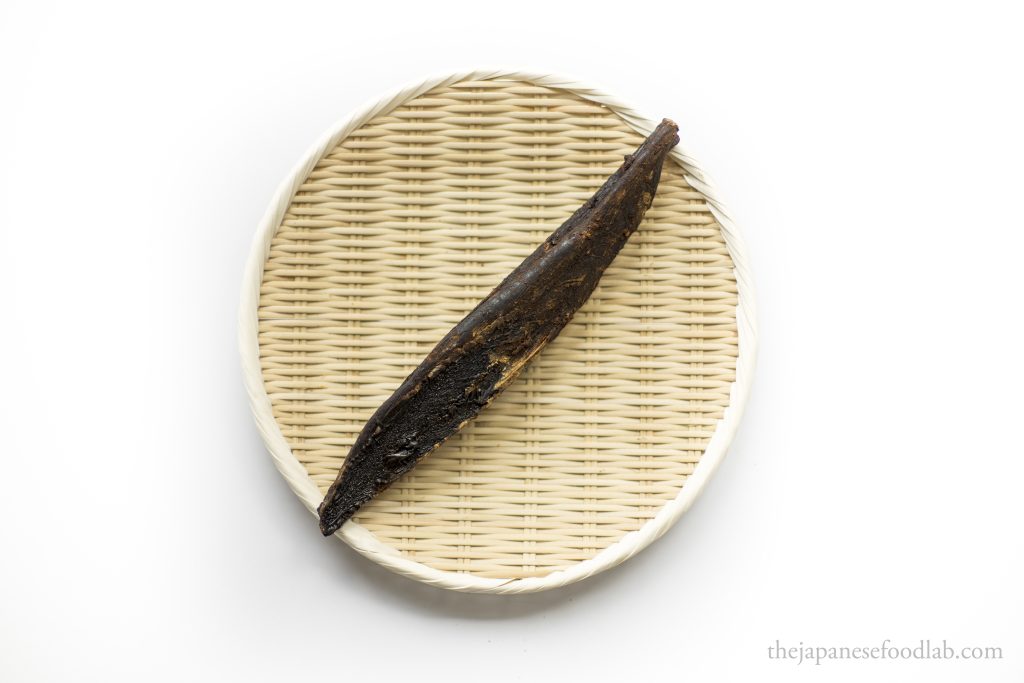
What is arabushi?
The ‘ara’ in arabushi (荒節/あらぶし), translates to rough or crude, indicating that it is Katsuobushi sold with minimal refinement. This means that after repeatedly smoking and cooling the fish filets to remove moisture, they are then packaged up or shaved as is. Because no mold is applied to the filets to further ferment it and break down the fish proteins, the savory taste of the katsuobushi is not as refined and concentrated. However, they have a much stronger smoky smell and deeper taste compared to karebushi and are therefore usually used for making soups or sauces at your lunchtime rush udon, soba or tempura restaurant.
The process of further applying and fermenting the katsuobushi with mold can last from many weeks to several months, and so the omission of these steps when making arabushi greatly speeds up the rate of production and lower the cost. As such, almost all katsuobushi available at local supermarkets or exported overseas are made from arabushi.
If a product simply states that it is katsuobushi (鰹節/かつお節), even without the word ‘ara’ (荒), you can safely assume that it is made from arabushi that has not undergone the final fermentation process with mold. This not only applies to whole filet that you shave yourself or dashi packets, but also to preshaved katsuobushi. Commonly known as flower katsuobushi or hana katsuobushi (花鰹節), it is almost guaranteed to be made from arabushi unless otherwise stated.
It is not so common to find arabushi sold whole, but can easily be found shaved in all five different ways. It is also impossible to find Satsuma arabushi as it is not worth the time and effort.
Sometimes, a cheaper product that has been vacuumed pack is sold on the market as value added katsuobushi (かつお加工品). Whilst sometimes mistaken for arabushi, this kind of product is usually liquid smoked and thus is not designed for making stock from. The liquid and oils from it will stain your shaver and also cause the carbon steel blade to rust.
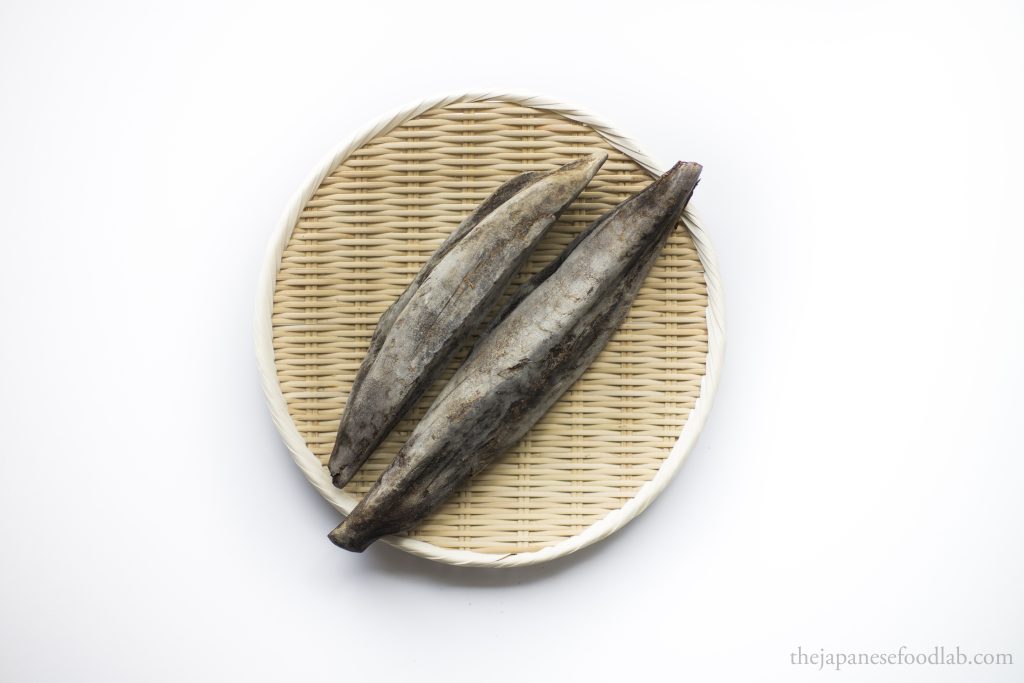
What is hadakabushi?
To ensure the mold can properly penetrate and ferment the arabushi, the filets are then scraped or sanded to remove the tar, and any fat which has formed on the surface. The resulting scraped filets are known as hadakabushi (裸節) and the scraped off sections of the filets are known as red peelings (赤むき aka muki).
Both arabushi and hadakabushi have not been fermented in any way at this point. However, hadakabushi is usually sold at a much higher price. This is because the majority of hadakabushi is processed into karebushi (枯節), elaborated on below. It is hard to find shaved hadakabushi as it is usually sold whole. Even rarer, you can sometimes find Satsuma hadakabushi.
Hadakabushi has a much less smoky taste compared to arabushi, but is deeper and richer compared to karebushi.
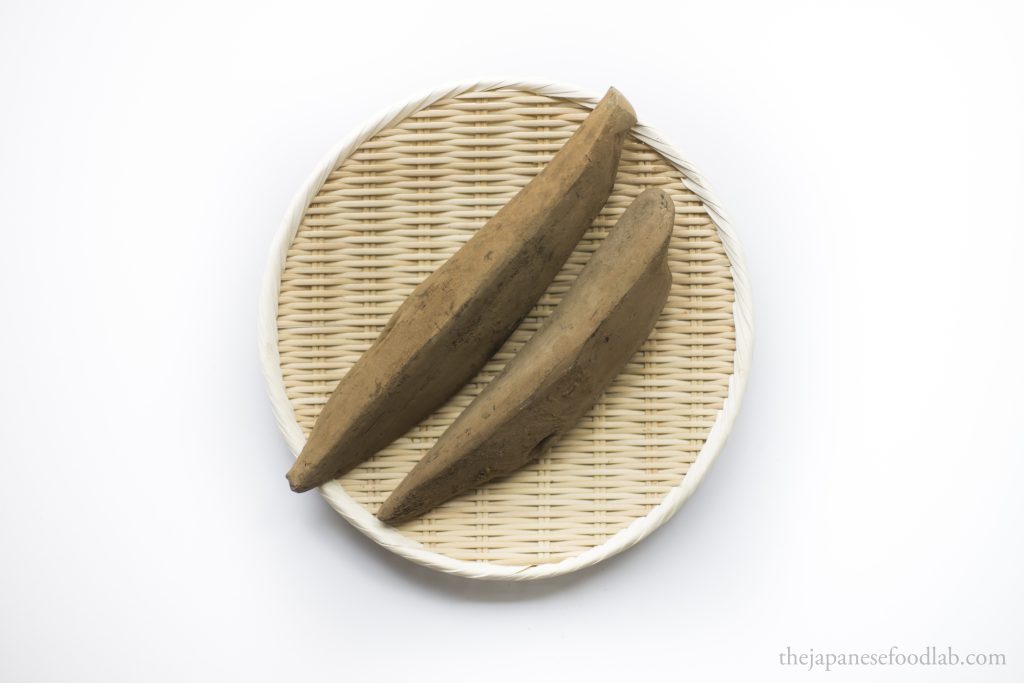
What is karebushi?
The highest grade of katsuobushi are karebushi (枯節), whereby hadakabushi filets are inoculated with mold that excrete enzymes to further ferment the fish similar to koji. The enzymes from the mold breakdown proteins and lipids in the fish into more easily digestible compounds that increase our perception of savouriness. At the same time, the filets are also dried between inoculations to further remove any additional moisture. As such, the taste of karebushi is much more pure and refined and is used to make dashi served at high end restaurants. One could possibly argue that karebushi is less flavourful compared to arabushi as the stock it produces contains less of the smoky notes and fatty mouthfeel. Therefore, you’ll be hard pressed to find karebushi used at a ramen, soba or udon restaurant.
The inoculation and drying cycle can be repeated 3 to 6 times over a period of several months, with the concentration of savoriness increasing with each cycle, and thus the price as well. Filets that have undergone a higher number of cycles can be called honkarebushi (本枯節) denoting that they are ‘true’ dried katsuobushi that is made in the traditional way. Sometimes, you’ll see the word ‘kare’ (枯) dropped, but simply honbushi (本節) indicates the same thing. The highest grade product you will be able to find on the market is Satsuma honkarebushi (薩摩本枯節).
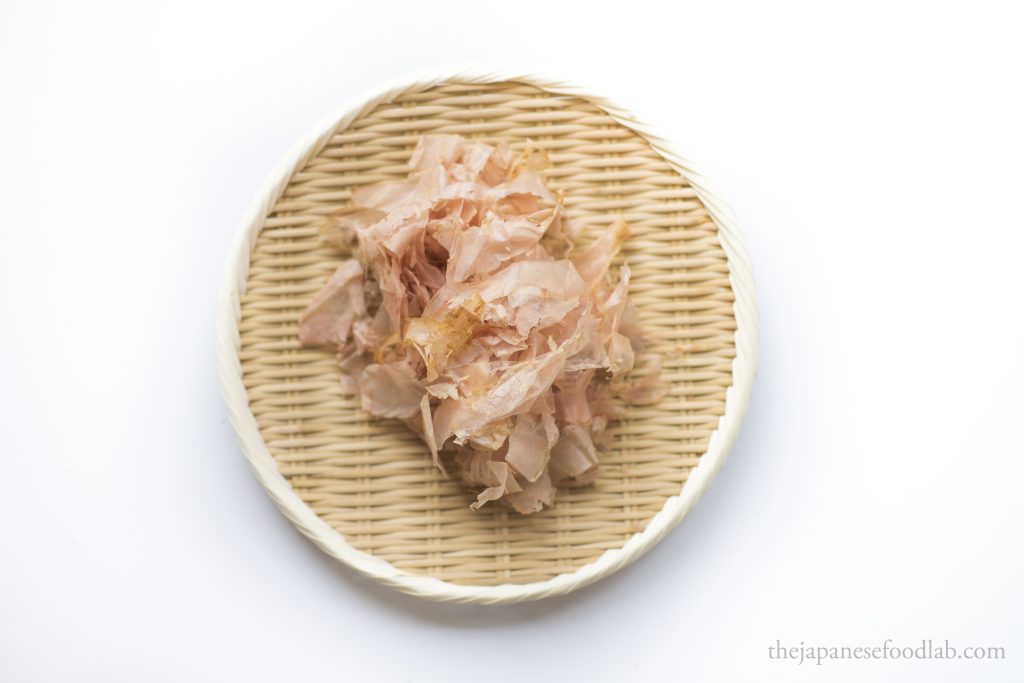
What is chiainuki?
Due to the migratory nature of fish in the Scombridae family such as skipjack tuna, their flesh tends to have a higher level of myoglobin and can sometimes have a dark red blood line running through the center of the fish. This bloodline is usually associated with being more bitter in taste, with an almost liver-like metallic taste to it from the iron in the blood. When making katsuobushi, the blood line is usually not removed, as it doesn’t have a huge impact on the final taste of the stock made from it.
However, when arabushi is being made into hadakabushi, you can occasionally find producers who remove the bloodline from the filet as well in order to create a katsuobushi that makes stocks with a clearer appearance and less harsh taste. The words chiainuki (血合抜) denote that the blood line has been removed from the filet. For example, arabushi with the blood line removed (かつお荒節血合抜).
These filets are almost never sold whole as it is better to shave them with a commercial machine. The shaved flakes have a much lighter color with no reddish edge.
What is Hatsu katsuobushi?
Hatsu katsuobushi is katsuobushi made from the first wave of skipjack tuna arriving back from migration from April to June. It sits in a separate category from arabushi, hadakabushi and karebushi as it is not based on processing, but rather seasonality.
It is more prized than normal katsuobushi as it contains a far lower fat content, lowering the chances of the fat going rancid during processing. Read our article on Hatsu and Modori katsuobushi to learn more.
You always post awesome articles, been looking forward to this for awhile refreshing once every few days in hopes to see you post. Hope you’ve been well Phil.
Thank you!